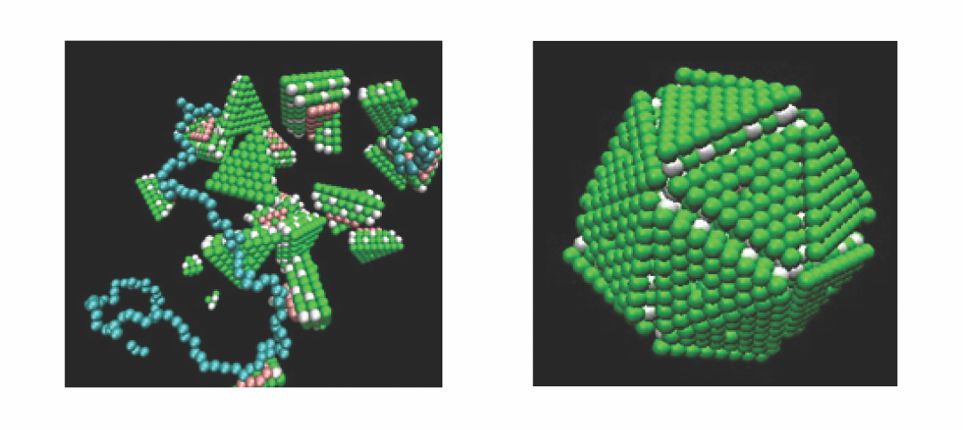Building a virus the simple way
DOI: 10.1063/PT.3.1596
Building a virus the simple way. The assembly of a virus is a complicated macromolecular dance. Tens or hundreds of proteins—each several hundred amino acids in length—must organize by way of salt bridges, hydrogen bonds, and other chemical linkages to form a protective shell known as a capsid, which encases the virus’s genetic material. But at least in some cases, that complex process can be fairly well replicated with a system of balls and springs. So conclude Murugappan Muthukumar and Jyoti Mahalik (both at the University of Massachusetts, Amherst), based on simulations that mimic the self-assembly of the so-called minute virus of mice. The capsomers—basic structural units of the capsid—are modeled as rigid, triangular assemblies of spheres, as seen in the left image. Some spheres (white) are treated as “sticky,” others (pink) carry a positive charge, and all are forbidden from overlapping. Within a narrow temperature range, the simulated capsomers assemble successfully into an icosahedral shell, as shown at right. Thermodynamically, the process resembles crystallization: Once the first two or three capsomers have bonded—that is, once the capsid has nucleated—the remaining capsomers begin to fall quickly into place. The process slows during the final stages as the entropic penalty for inserting new capsomers grows. Interestingly, the inclusion of a DNA-like strand (blue), modeled as a chain of negatively charged spheres connected by springs, tends to speed up the proceedings, sometimes by an order of magnitude or more. (J. P. Mahalik, M. Muthukumar, J. Chem. Phys. 136, 135101, 2012.)






